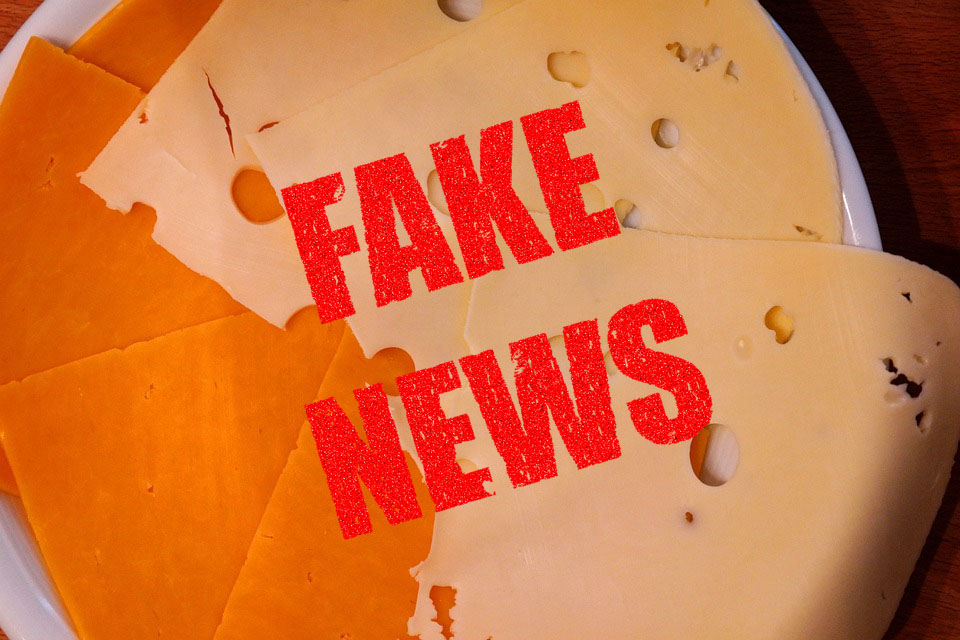
Weight-loss Berries and Orange Cheese: When fake news hits your dinner table.
Rebecca Wenrich Wheeler, MA, M.Ed. – Senior Health Educator
What does Nutella, chocolate, dandelion weed, the Acai berry, green coffee extract, and a 17th century cheese have in common? Give up? All of these food items have been the center of a false news story. Before modern politics made “fake news” a household word, health professionals have long battled to contradict false headlines, particularly in the area of nutrition.
Health fraud scams refer to products that claim to prevent, treat, or cure diseases or other health conditions, but are not proven safe and effective for those uses” (USFDA). In fall 2016, the most popular Facebook article on cancer claimed that dandelion weed would kill cancer cells in 24 hours of ingestion (Forster 2017). The dandelion weed article was shared 1.4 million times, which was four times more than the most shared legitimate news story that month, which happened to be a New York Times article (Forster 2017). A consumer falling for such scams not only wastes money, but the person might choose to try the unproven alternative before an evidence-based treatment. In turn, the illness might progress to a point where the evidence-based treatments are no longer viable.
In 2013, the Federal Trade Commission charged Beony’s International and its owner for marketing their acai berry supplements using false information about the berry’s weight-loss properties (FTC 2013). The company fabricated news reports on their websites and falsely claimed the berry had been promoted on news outlets, such as CNN and Consumer Reports (FTC 2013). Boeny’s settlement costs exceeded $1.6 million dollars.
NPR’s Scott Hensley (2011) highlights several tips for determining if a company is deceitfully promoting a product online:
- Realize that lists of endorsements from recognized news sites may be fabricated.
- Roll your mouse over links to see if they lead you to sales sites.
- Beware if all of the sources and videos are favorable toward the product and no negative critiques are offered.
- Be cautious if all the comments are favorable under the article, or if the author has blocked commenting altogether.
- Watch out for disclaimers in very fine print and free trials that turn out to cost a fee.
In early 2015, you may have been pleased to read the headline “Chocolate can help you lose weight,” along with a scientific-looking study authored by Johannes Bohannon and his colleagues (Lombrozo 2015). Stories about the study ran on several mainstream media sites. A few months later Bohannon revealed the entire study was a hoax. He purposely ran a weak study with only 16 participants to help engineer the results. Bohannon, whose real name is actually John, said he authored the study “to make a point about the media’s willingness to uncritically report and promote junk science,” (Lombrozo 2015). While the ethics of Bohannon’s actions may be debated, it does highlight the need to be critical consumers of media.
Last fall, Stanford University published a study on how well middle school, high school, and college students differentiate between advertisements and legitimate articles. The results even shocked the researchers. Over 7,800 students participated in the study and a large majority could not distinguish between advertisements or sponsored content and a legitimate news story (Domonoske 2016). The researchers wrote: “Even most college participants did not recognize that a tweet from an activist group could be biased. Many assume that, because young people are fluent in social media, they are equally savvy about what they find there. Our work shows the opposite,” (Stanford 2016). The Stanford researchers provide tips on how to become more savvy connoisseurs of media:
- Do not assume the first article listed in a search is the most credible. Search engines do not order results based on reliability.
- Instead of reading the entire questionable article, leave it, and search for the information elsewhere.
- Read laterally. When checking information in a questionable article, open up several tabs, and check if the information can be found on other sites.
- Avoid judging a webpage based on its own description. If a website claims to be an authority on a subject, search for reviews on the website, and its authors.
Although the Internet provides a vehicle for fake news to rapidly spread, false news related to food is not a new phenomenon. In fact the tradition of dying cheese orange can be attributed to false advertising. In 17th century England, breeds of cows who ate beta-carotene rich grass transferred the orange pigment into their milk, and thus into the cheese (Aubrey 2013). Orange cheese indicated high quality. Other cheesemakers wanted to make more money, so they separated the cream to make butter. The bargain cheesemakers were left with a white, low-fat cheese, but in order to sell the cheese, they had to trick the consumer and add orange dye (Aubrey 2013). Next time you rip into a perfectly packaged block of orange cheddar, search the label for annatto, and you know you’ve been duped by false advertising centuries in the making.
Works Cited
Lombrozo, T. (2015, June 08). What Junk Food Can Teach Us About Junk Science. Retrieved May 14, 2017.
US Food and Drug Administration (n.d.). Health Fraud Scams. Retrieved May 14, 2017.
Interested in bringing this topic to your school or organization? Consider scheduling one of these related programs.
- Mission Nutrition
Grade Level: 6th – 8th | Program Length: 60 minutes
It’s a challenge balancing food and physical activity. Participants will discover the importance of carefully reading food labels, barriers to healthy eating and the risks associated with over- and under-eating. - #YouthCulture: Adolescent Brain Development and the Role of Social Media
Level: Adults Only | Program Length: 2 hour workshop
Learn about current research on adolescent brain development and teen risk perception. Participants will also explore how a risk perception impacts a teen’s engagement with social media and Internet security.
